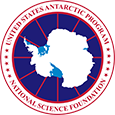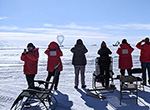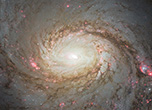|
Science - Space and Atmospheric Physics Most Recent
Quick Find
More ResultsJan
09
2023
South Pole winter crew participate in virtual reality studyScience | Space and Atmospheric Physics Station staff tested a therapy that could be used on future space missions Mar
14
2022
Where are IceCube's neutrinos coming from?Science | Space and Atmospheric Physics Thanks to the IceCube Neutrino Observatory, scientists have identified several types of cosmic structures that produce neutrinos. Mar
07
2022
Six stunning photos from the Antarctic solar eclipseScience | Space and Atmospheric Physics A total solar eclipse passed over Antarctica on December 4, 2021, a rare and exciting celestial event for the southernmost continent. Nov
23
2021
Scientists prepare for rare Antarctic solar eclipseScience | Space and Atmospheric Physics Antarctica will experience a total solar eclipse next Saturday, a rare occurrence that will give scientists insight into the behavior of Earth's upper atmosphere. Oct
12
2020
Southernmost Telescope Gets an Array of UpgradesScience | Space and Atmospheric Physics One of the telescopes at the bottom of the world is getting a major upgrade. The South Pole's venerable Keck Array is being reconstituted into the more powerful BICEP Array, making it more sensitive and better able to observe the most ancient light in the universe. Sep
28
2020
Heavy Cosmic Rays - Part II: The Death and Life of SuperTIGER-IIScience | Space and Atmospheric Physics The season before SuperTIGER-II's successful 2019 flight, the payload had an unexpectedly short flight over Antarctica. Brought down after less than a day because of a problem with the balloon carrying it, it landed in a crevasse field 150 miles from McMurdo Station. This could easily have ended in calamity. Instead, it led to one of the most daring and complicated recoveries of a long-duration balloon payload in recent memory. Sep
14
2020
Heavy Cosmic Rays - Part I: The Flight of SuperTIGER-IIScience | Space and Atmospheric Physics In December 2019, SuperTIGER clawed its way back into the upper atmosphere. The second flight of the SuperTIGER cosmic ray experiment, officially dubbed SuperTIGER-II, flew high above the icy continent for more than a month, collecting data on the high-energy particles that zip through the cosmos. Apr
27
2020
Stringing Together More Neutrino DetectorsScience | Space and Atmospheric Physics The biggest experiment at the South Pole is getting a significant upgrade. Over the next three years, IceCube, the neutrino detector located at the South Pole, will be getting numerous new detectors added to its core. It's the biggest upgrade to the IceCube detector since its completion in 2010. Sep
04
2019
Plasma Patch AtlasScience | Space and Atmospheric Physics High above the surface of the Earth, flow giant, invisible clouds of charged gas that can degrade radio transmissions, disrupt GPS Signals and play havoc with other communications and navigation systems. But they're not always showing up when scientists predicted. This year geophysicist Alex Chartier traveled across Antarctica to figure out what's going on in Earth's upper atmosphere. Jul
23
2019
The Flight of X-CaliburScience | Space and Atmospheric Physics Antarctica can be a double-edged sword for astronomers: conditions there are some of the best in the world for observing the heavens, but the harshness of the place can be hard on equipment. In December 2018, astronomers who launched the x-ray telescope "X-Calibur" to study neutron stars and black holes got a taste of that contrast. Jul
12
2018
Neutrinos Point The Way To Cosmic RaysScience | Space and Atmospheric Physics Using data gathered by the National Science Foundation- (NSF) funded IceCube Neutrino Observatory at the South Pole, scientists have for the first time identified a super massive black hole as the source of some of the highest energy cosmic rays. Dec
20
2017
The South Pole Telescope's New EyesScience | Space and Atmospheric Physics The telescope at the bottom of the planet spent winter calibrating and collecting data after its vision enhancement last summer. Researchers installed a new camera system in the South Pole Telescope, a major upgrade that allows researchers to collect more data than ever before. Oct
05
2016
GRIPS' Moment Under the SunScience | Space and Atmospheric Physics As a giant helium balloon lifted the alabaster solar telescope GRIPS (Gamma-Ray Imager/Polarimeter for Solar Flares) aloft, the excitement on the ground was palpable. The team of researchers, who had spent seven years working on the project, jumped for joy and snapped photos of their experiment in the air for the first time.
|
||||||||||||||||||||||||||||||



For USAP Participants |
For The Public |
For Researchers and EducatorsContact UsU.S. National Science FoundationOffice of Polar Programs Geosciences Directorate 2415 Eisenhower Avenue, Suite W7100 Alexandria, VA 22314 Sign up for the NSF Office of Polar Programs newsletter and events. Feedback Form |



